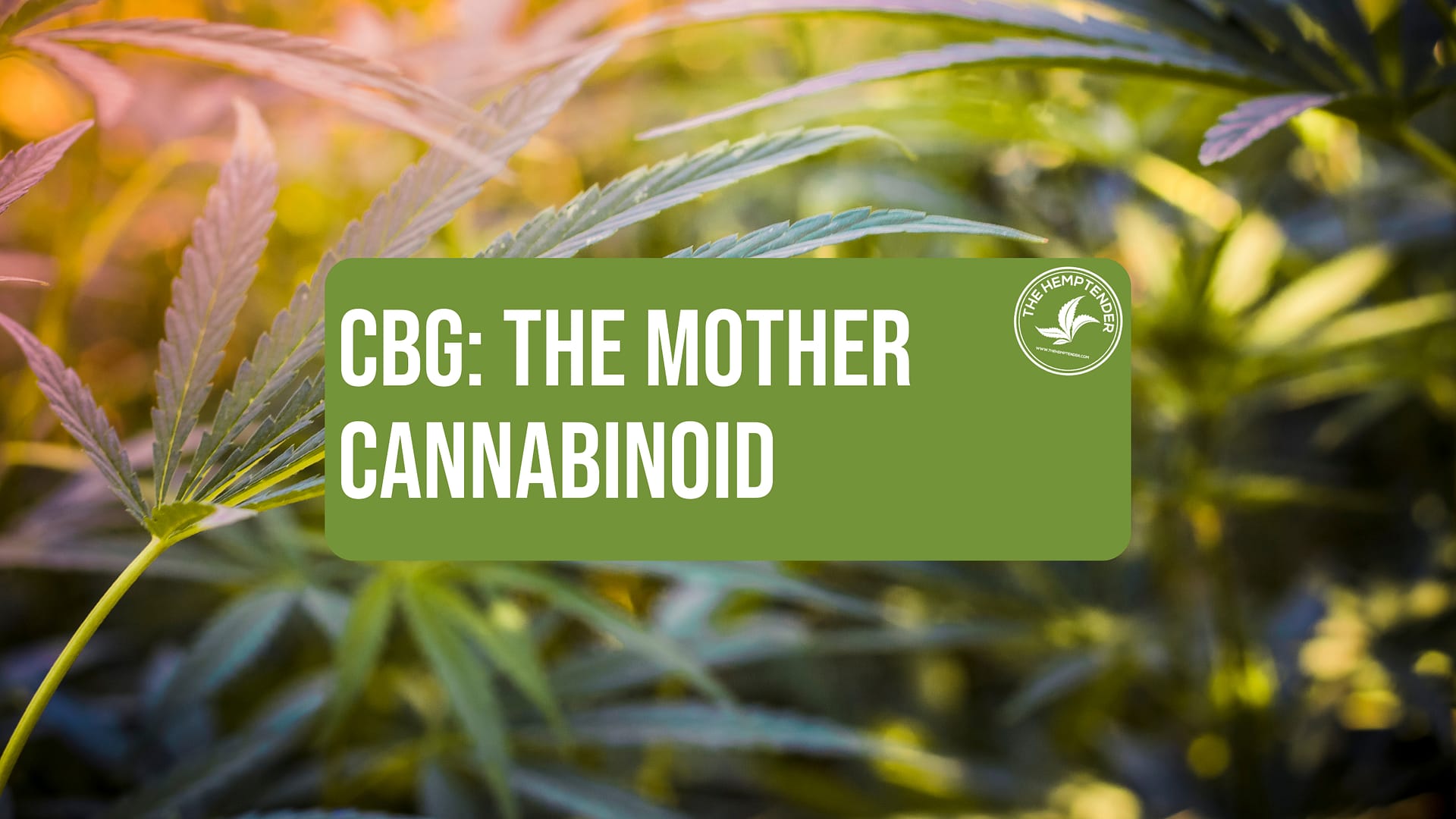CBG: The Mother of Cannabinoids

CBG, also known as Cannabigerol, is the mother of many cannabinoids. As the genetic precursor to cannabinoids like CBD and THC, it comes with its own list of therapeutic properties and potential benefits. Here’s everything you need to know about CBG, including what it is, where it comes from, and a few potential benefits it may offer.
What is CBG?
Cannabigerol (CBG) is a cannabinoid that is produced naturally in hemp and cannabis plants. Many other cannabinoids are derived or synthesized from this cannabinoid, which is why it’s usually only found in small quantities in mature plants. With that said, most of the CBG you can purchase is harvested from young hemp plants.
You could compare CBG to a stem cell— it’s like a building block that can transform into other cannabinoids under certain conditions. Depending on environmental factors like temperature, UV light, and oxygen exposure, CBG may change into over seven cannabinoids, including THC or CBD.
Where does CBG come from?
Since younger cannabis and hemp plants contain higher amounts of CBG than mature plants, it’s usually harvested about 6-8 weeks into the flowering cycle. With that said, you’re not going to find mature, smokable flowers out there with CBG as its primary cannabinoid. In fully developed hemp plants rich in CBD, the CBG has already undergone the changes necessary to convert, and so typically, there are only around 1% CBG molecules left.
However, it can sometimes be difficult to extract CBG. Right now, scientists are exploring ways to synthesize CBG from other chemicals, and cultivators are experimenting with genetic manipulation and cross-breeding to help hemp plants produce more CBG. In the meantime, though, CBG is extracted from hemp plants and made into concentrates or tinctures.
How does CBG work?
Like other cannabinoids, CBG is processed in the endocannabinoid system (ECS). Your ECS comprises hundreds of molecules and receptors responsible for messaging back and forth to keep the body balanced and functioning optimally. The ECS plays a role in body temperature, mood, sleeping and waking cycles, appetite, pain responses, immune system function, and metabolic speed.
The molecules found in the ECS are known as endocannabinoids, with endo meaning within. These are the natural chemical messengers that our body produces to signal different processes in the body to respond and keep the body leveled out.
CBG, like other cannabinoids found in cannabis and hemp, mimics the natural endocannabinoids to help the body stay balanced, similarly to CBD. It binds to both the CB1 and CB2 receptors within the ECS and is thought to strengthen the function of anandamide, also known as the bliss molecule. Since it may help keep anandamide levels optimal, it might help with motivation, pleasure, appetite, sleep, and pain. The added benefit is that CBG won’t get you high. You get all of the potential benefits without the stoney feelings.
Potential Benefits of CBG
While the research on CBG is scant compared to other cannabinoids, there is still a lot of potential evidence that it may be helpful for your overall wellness. Since it shows a potentially balancing effect on the endocannabinoid system, some studies suggest that it may affect several areas in the body.
1. Pain and Inflammation
CBG has been tested in both humans and animals. One study found that it may be helpful against harmful inflammation.
Inflammation is also one of the leading causes of chronic pain. When inflammation does more harm than good, CBG’s anti-inflammatory effects may help reduce the negative effects of inflammation, including pain.
2. Depression, Anxiety, Sleep, and Nervous System Support
Because of the way CBG works within the endocannabinoid system, it may play a role in leveling out your mood. One survey found that patients who took CBG expressed a decrease in depression, anxiety, chronic pain, and insomnia. Lack of sleep caused by chronic pain and stress may cause prolonged depression, and the balancing effects of CBG may make it easier to catch up on rest, keep your mood level, and combat depression.
Other studies have looked at the potential effects of CBG and found that it may have neuroprotective properties. One study found that CBG may have protected nerve cells in the brain from damage and improved motor functions.
3. Antibacterial and Antibiotic Effects
In a 2020 study, CBG demonstrated potential antibiotic effects as well as antibacterial properties. In the same vein, these antibacterial and anti-inflammatory properties may also reduce the appearance of acne and other inflammatory skin conditions.
To summarize;
- CBG shares many of the same potential benefits as CBD
- CBG may be a potent anti-inflammatory and pain reliever
- CBG shows some potentially antioxidant properties
- Since it works with anandamide levels, it may be helpful for depression or anxiety
At the end of the day, CBG shows many potential benefits for your health and overall wellness. While nothing is proven or set in stone yet, it may work best when you take it daily due to its relationship with the endocannabinoid system, like CBD. If you’re interested in adding CBG to your daily routine, you can trust The Hemptender for all of your hemp-derived needs. We stand by our full-spectrum, lab-tested products and are happy to support you in every step of your wellness journey.





